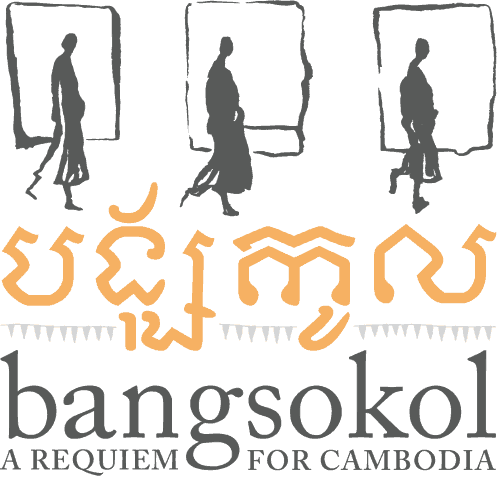Cambodia Art: BANGSOKOL
Two beloved Khmers and survivors of the Khmer Rouge—composer Him Sophy and filmmaker Rithy Panh (The Missing Picture)—create a musical ritual to return dignity to Cambodia’s dead from the genocide. Combining traditional Cambodian music, smot chanting, ancient instruments, and powerful film, this stunning piece of music seems to sing to the heavens as it mourns those that died in the killing fields.
Bangsokol is a traditional ceremony in Buddhist religion. . . . People offer food, fruit, and other needs, and pray to their ancestors and wish for people who’ve already passed away to rest in peace and calm. Meanwhile, the ritual of Bangsokol also prays for living people to be healthy, happy, and have good lives.
Commissioned by CAMBODIAN LIVING ARTS. Produced by THE OFFICE performing arts + film., filmmaker Phloeun Prim, Cambodian Living Arts, Him Sophy, composer, and film by Rithy Panh.
Panh calls Bangsokol a “vital act of memory. It is an attempt to give dignity to the dead; to reconcile with our own past; to give a face and a name to the victims, to give their souls peace.”
The work contextualizes the form of the Western requiem with bangsokol — the white cloth placed over the deceased during a Buddhist funeral, and the ceremony of its removal.
The show is not only a tribute to Cambodian culture but an attempt to revive it. Because of the slaughter, sixty per cent of today’s Cambodians are under thirty years old. They know little about the genocide, and for the time being that is perhaps just as well, since so many modern Cambodians are the descendants either of the Khmer Rouge assassins or of the people they tried to kill. If they knew which side they were on, they might want to take revenge. Panh told a journalist that no one in the country wants to see the films he has collected from the period. They want to put the whole thing behind them. “But in ten years,” he says, “they will be interested.” At which point “Bangsokol: A Requiem for Cambodia” will be waiting for them.

